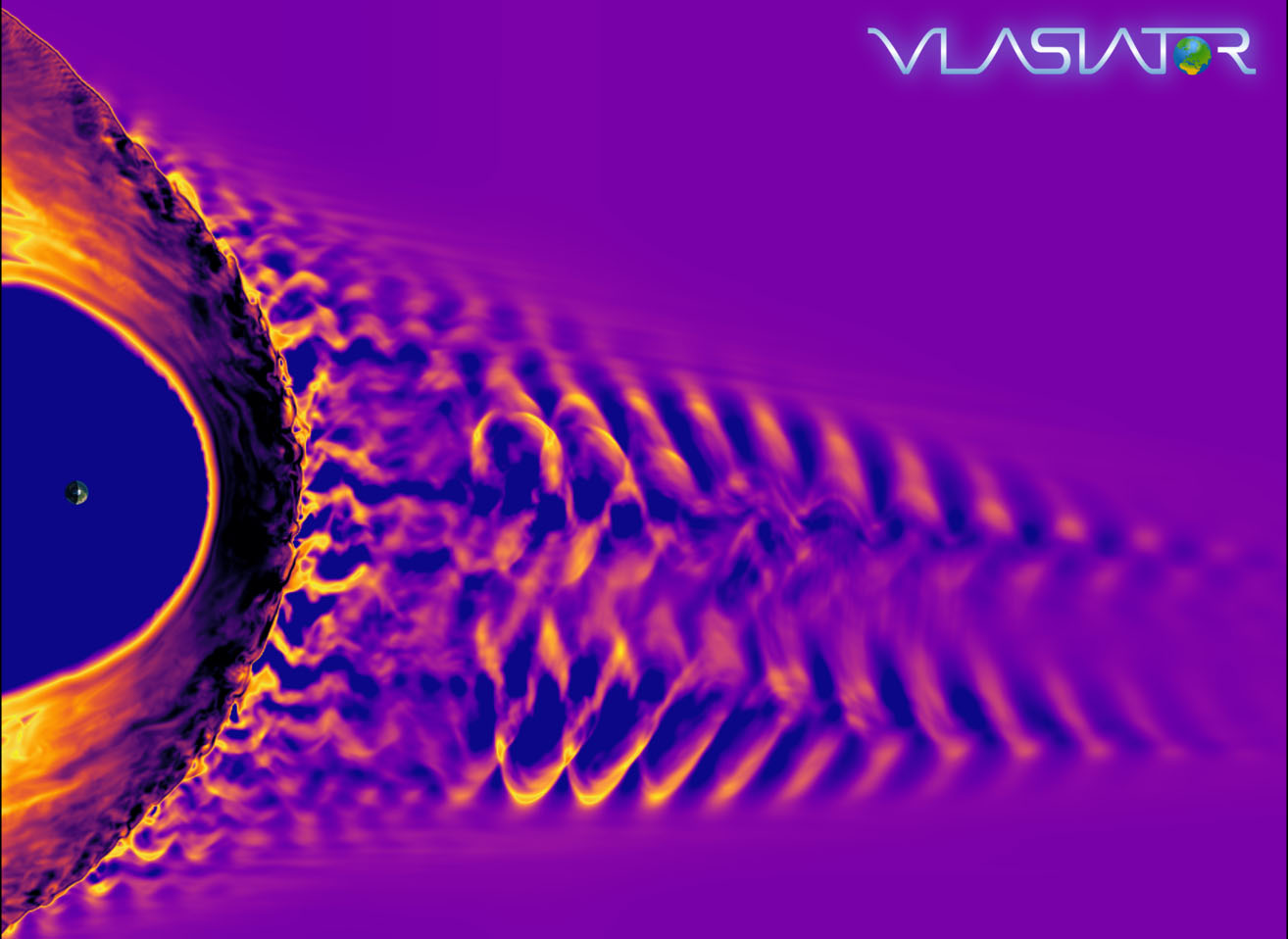Solar Wind Plays Haunting Music on Earth's Magnetic Field
When particles from the sun hit Earth during solar storms, our planet breaks into "song."
New data show how Earth's magnetic field generates waves after being bombarded by solar wind, energetic particles that flow from the sun's atmosphere and out into the solar system.
To turn these electromagnetic waves into an audible "song," researchers transformed the wave frequencies into sound waves. The result seems more like "the sound effects of a science fiction movie than a natural phenomenon," the European Space Agency (ESA), which collected the data, said in a statement.
Related: The Sun Isn't Silent — Hear Its Song in New Observatory Data

Electromagnetic waves are usually "humming" in Earth's magnetosphere at a relatively stable frequency, but when swarms of energetic particles from the sun hit our planet's protective magnetic shell, it busts out into a "song" of many frequencies, the researchers explained.
"In quiet times, when no solar storm is striking the Earth, the song is lower in pitch and less complex, with one single frequency dominating the oscillation," ESA officials said. "When a solar storm hits, the frequency of the wave is roughly doubled, with the precise frequency of the resulting waves being dependent on the strength of the magnetic field in the storm."
The haunting celestial music comes courtesy of ESA's Cluster mission, a four-spacecraft set that studies Earth's magnetic field and how it interacts with solar particles. A team led by Lucile Turc, a University of Helsinki particle physicist and former ESA research fellow, generated the music from portions of nearly two decades of Cluster observations.
Get the Space.com Newsletter
Breaking space news, the latest updates on rocket launches, skywatching events and more!
The data was collected during six observation periods between 2001 and 2005; that's when Cluster flew into a region of the magnetic field called the foreshock, where the particles first hit the magnetic field during solar storms.
Besides collecting data that generated the beautiful sounds, Cluster also revealed that the generated waves in Earth's magnetic field are more complex than scientists previously thought. The observations suggest that the single, dominant wave frequency that permeates the magnetic field during "quiet" periods of solar activity not only doubles in frequency, but can also divide into several different frequencies when a solar storm breaks against the foreshock.
"Our study reveals that solar storms profoundly modify the foreshock region," Turc said in the statement.
These foreshock changes could affect space weather-related magnetic activity closer to the Earth's surface. Researchers are still trying to understand exactly what happens when a solar storm bombards the foreshock, but they do know that the generated magnetic waves can't go back into space. That's because the solar storm is pushing them toward our planet in a process that takes only about 10 minutes.
Related: Solar Storms Can Crash Communications, But 3D Models Aid Prediction
"Before they reach our atmosphere ... the waves encounter another barrier — the bow shock — which is the magnetic region of space that slows down solar wind particles before they collide with Earth's magnetic field," ESA added.
"The collision of the magnetic waves modifies the behavior of the bow shock, possibly changing the way it processes the energy of the incoming solar storm," the ESA continued. "Behind the bow shock, the magnetic fields of Earth start to resonate at the frequency of the waves, and this contributes to transmit the magnetic disturbance all the way to the ground."
Overall, the researchers hope to better understand how "space weather" from the sun affects our planet, they said. There have been recorded instances of satellite, radio and (more than 150 years ago) telegraph disruptions due to intense solar activity. Space researchers, therefore, closely study the sun and its patterns of activity to do their utmost to keep our planet's infrastructure safe.
A paper based on the research appeared in the journal Geophysical Research Letters.
Follow Elizabeth Howell on Twitter @howellspace. Follow us on Twitter @Spacedotcom and on Facebook.

Join our Space Forums to keep talking space on the latest missions, night sky and more! And if you have a news tip, correction or comment, let us know at: community@space.com.

Elizabeth Howell (she/her), Ph.D., was a staff writer in the spaceflight channel between 2022 and 2024 specializing in Canadian space news. She was contributing writer for Space.com for 10 years from 2012 to 2024. Elizabeth's reporting includes multiple exclusives with the White House, leading world coverage about a lost-and-found space tomato on the International Space Station, witnessing five human spaceflight launches on two continents, flying parabolic, working inside a spacesuit, and participating in a simulated Mars mission. Her latest book, "Why Am I Taller?" (ECW Press, 2022) is co-written with astronaut Dave Williams.









